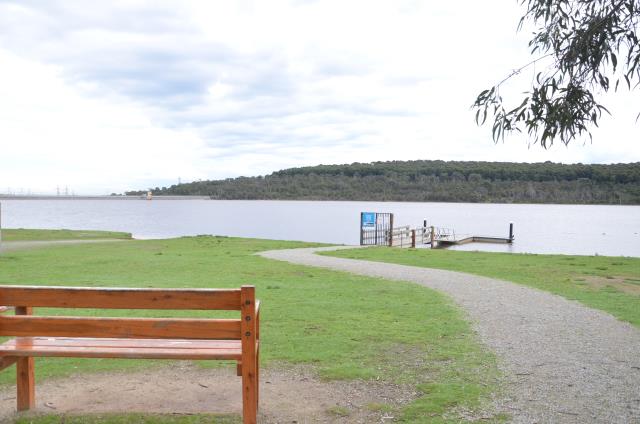Water safety is once again being highlighted, following the death of a paddle boarder at Lysterfield Lake earlier this month.
A 38-year-old man was found on Sunday 5 March, having drowned in the lake the previous day.
Parks Victoria have commented on the incident, noting that additional water safety signage and fencing were added to the lake following a 2015 report from Life Saving Victoria (LSV).
“Everyone at Parks Victoria is saddened by this incident and we extend our deepest condolences to the family and friends of the man who died,” an LSV spokesperson said.
“We have implemented the recommendations of a Life Saving Victoria report from 2015 to improve public safety and information at Lysterfield.
“This included the installation of additional water safety signage, fencing and annual summer safety events at the lake.”
Despite the recommended additions, water safety incidents continue to manifest.
Life Saving Victoria area lifesaving manager Liam O’Callahgan said that while LSV was not involved in the incident, it is a tragic reminder “to be aware of and prepared for the risks associated with inland waterways”.
“LSV extends its heartfelt condolences to the loved ones of a man who fatally drowned at Lysterfield Lake on Saturday 4 March,” Mr O’Callaghan said.
Water safety recommendations are crucial in avoiding heartbreaking accidents, Mr O’Callaghan said.
“This includes assessing potential risks and whether you have the skills to safely recreate in, on or around that body of water, never swimming or recreating alone, wearing a lifejacket and being aware of hazards such as hidden currents, debris, sudden depth changes and slippery or unstable edges.”
Inland waterways have accounted for 38 per cent of 42 drownings since 1 July 2022.
In recent years, LSV has provided risk assessment services and mitigation recommendations for Lysterfield Lake, including signage and education.
On 26 January 2023, LSV trialled placing lifeguards at four at-risk inland waterways, including Lysterfield Lake, targeting the higher risk period that coincided with the public holiday.
“Drowning prevention is a shared responsibility, rescue is the last line of defence and one LSV would rather not have to use, so it is important to remember your safety is your responsibility,” Mr O’Callaghan said.
“You need to be aware of your own skills and assess if they match the waterway you plan on recreating at; never swim alone, wear a lifejacket if boating or fishing, and always keep children under constant, active supervision.”
Life Saving Victoria is urging holidaymakers relaxing by the water to never relax on water safety, as alarming statistics show Victorians are 68 per cent more likely to drown on a public holiday than any other day of the year.
Sadly, 42 people have drowned in Victorian waters between 1 July 2022 and 7 March 2023, a number LSV does not want to see grow.
LSV general manager Paul Shannon reminded the public there are simple steps you can take to protect yourself and your loved ones, so your holiday does not end in tragedy.
“During the four days from Christmas Day, Victoria experienced its highest drowning period in 18 years, a trend we do not want to see repeated,” Mr Shannon said.
“This is why we encourage those heading to the water to swim between the red and yellow flags at a patrolled location wherever possible, never swim alone, actively supervise children and remember alcohol and water-related activities do not mix.”
Mr Shannon also cautioned those swimming or recreating in or near inland waterways of the potential hidden dangers lurking beneath the surface.
“This year, 38 per cent of all drownings occurred in inland waterways, compared with 36 per cent around the home or other bodies of water and 26 per cent in coastal waterways,” he said.
“Just because inland waterways look calm, does not mean there is no danger. There can be hidden hazards such as currents, snags or other debris, sudden drop offs and unstable edges.
“If you’re spending time by a river, lake, dam, creek or stream and plan on swimming, evaluate your skills and if they match the potential risks, enter feet first and slowly and if boating, paddling or fishing always wear a lifejacket to buy you time to survive if you do end up in the water.”
Even if you don’t intend to enter the water, Mr Shannon said it is imperative to be aware and prepared for all possible outcomes.
“Accidental entry into water has accounted for 41 per cent of fatal drownings in the past decade, which is why you can never be too careful when walking, or camping or recreating near water,” he said.
“Never take your eyes off little ones, we know children are curious, so keep under 5s in arm’s reach and under 10s in your constant and direct eyeline.
“It takes just 20 seconds and a few centimetres of water for a child to drown.
“Also be aware when walking by water of unstable rocks or slippery edges. Wear gripped shoes, don’t get too close to the edge, and familiarise yourself with and follow local signage.
“While anyone can drown, no one should, so please, keep water safety at the front of your mind.”







